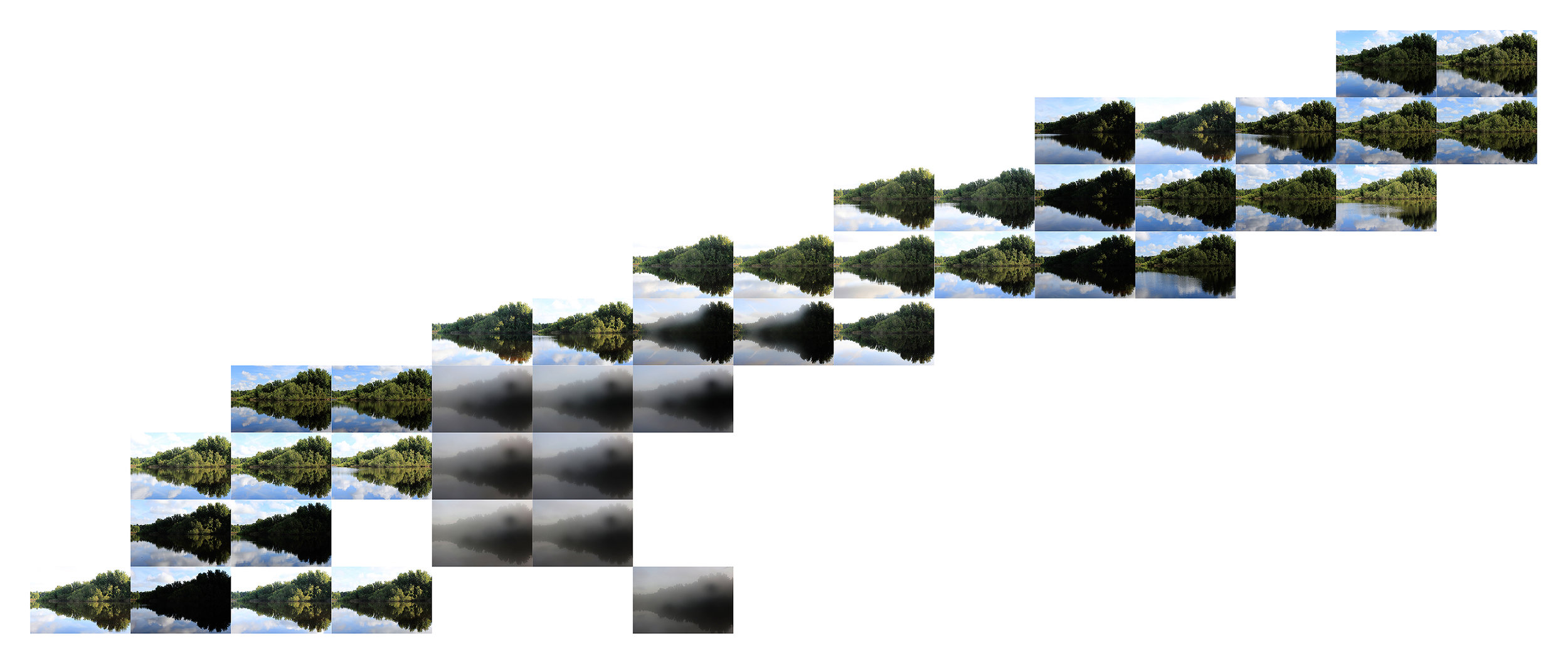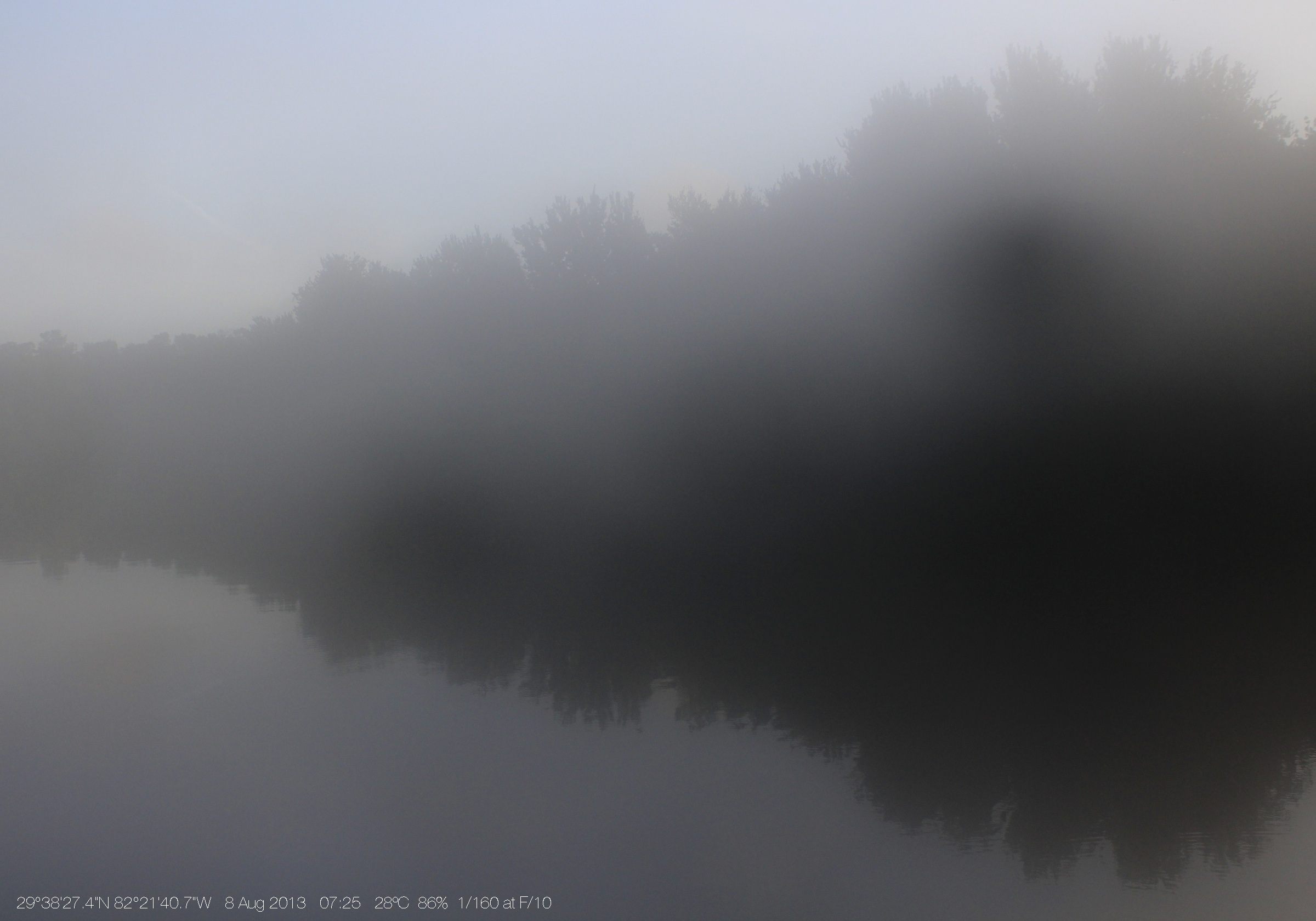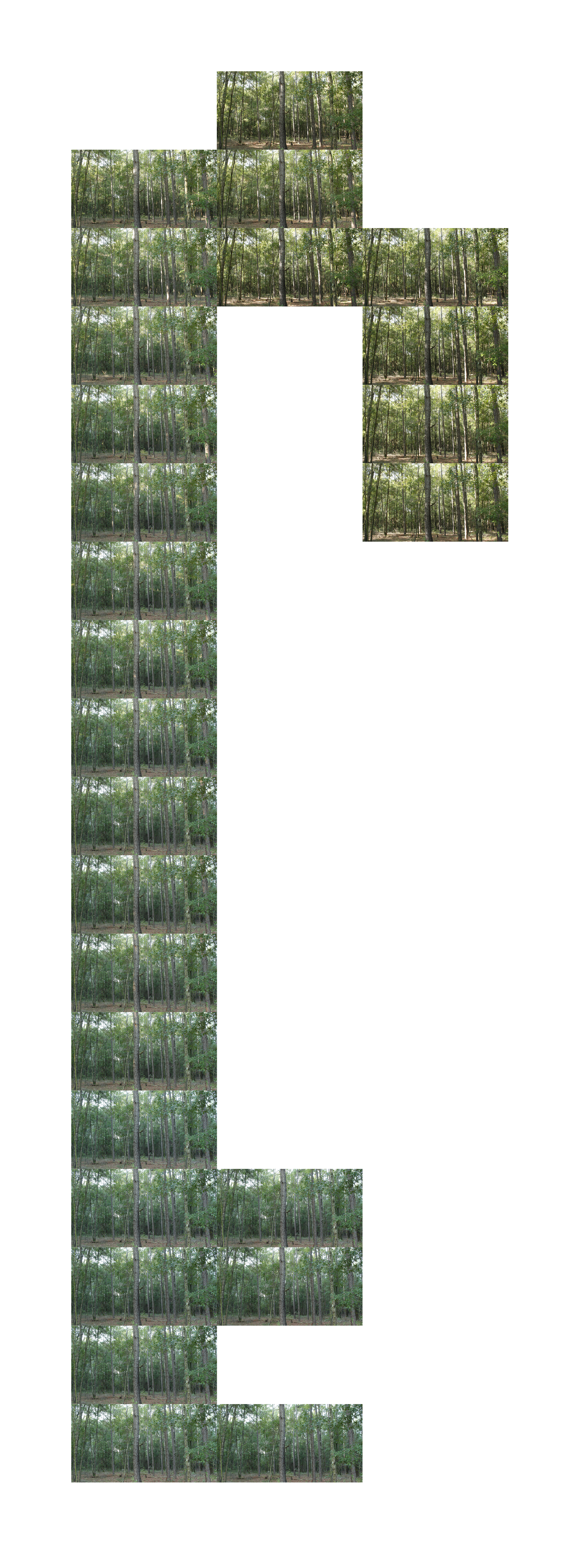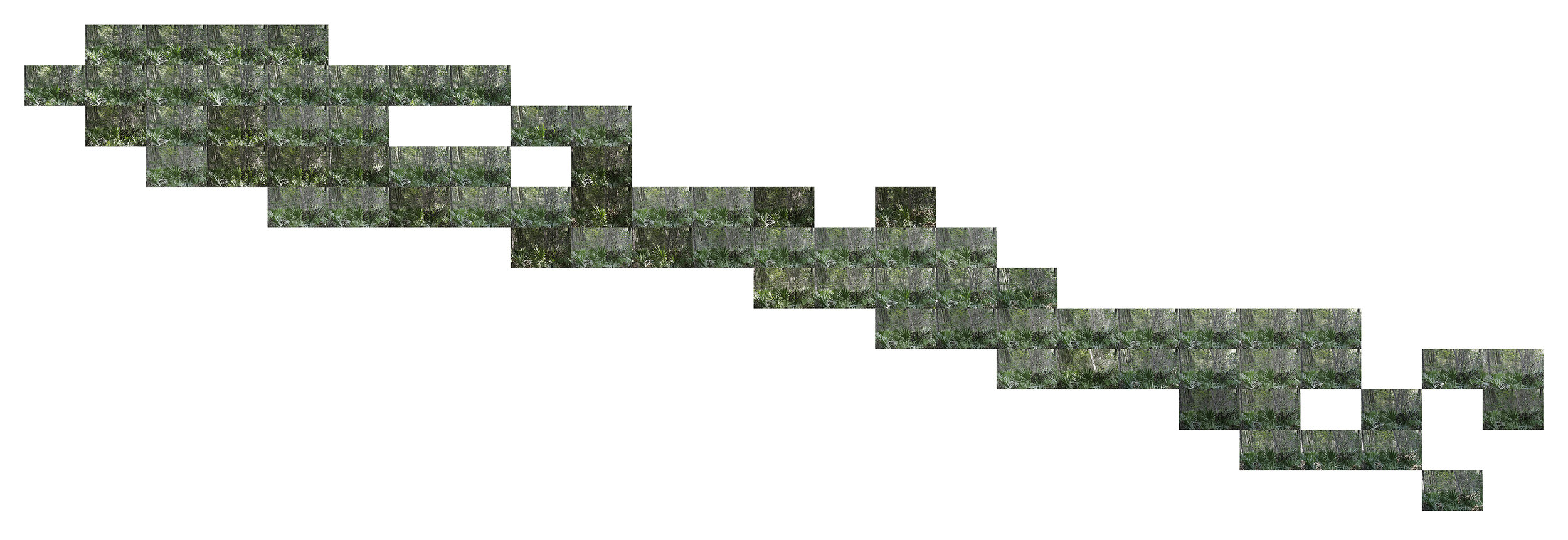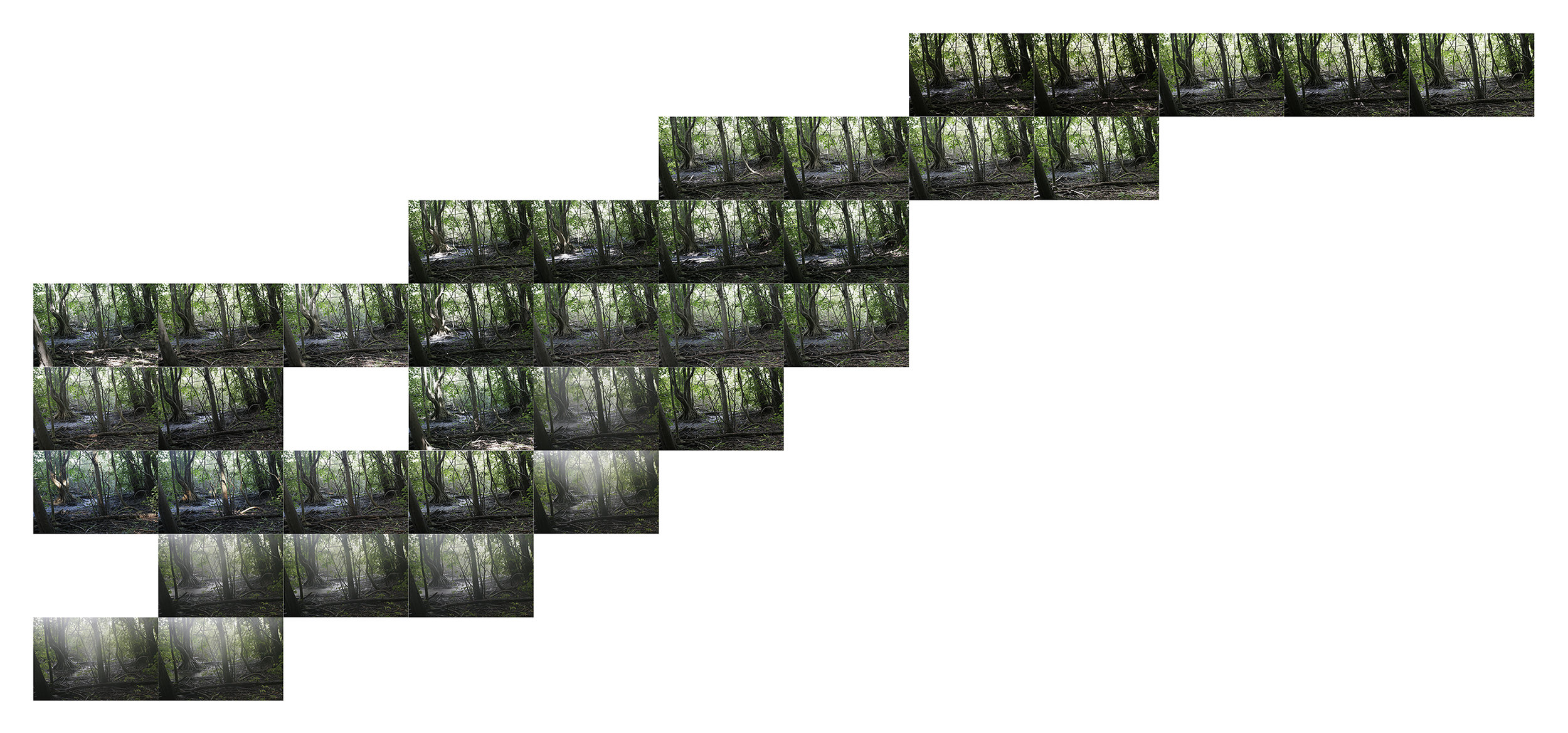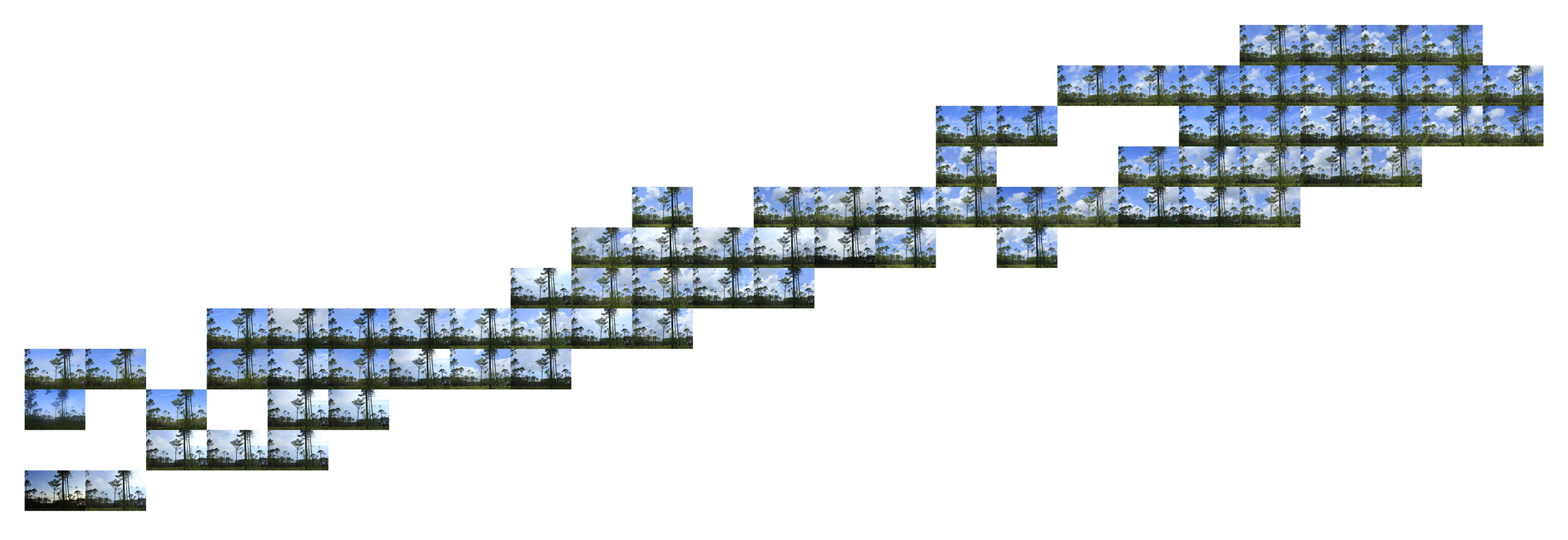The images in Unfixed Consciousness/Positive Unconsciousness are manifestations of the collective agency between the mechanical, technological, and atmospheric elements as well as my own as composer and interpreter. This was done by building an imaging device that triggers the shutter through changes in the temperature and humidity as detected by an SHT11x sensor that queried the environment once a minute. This device was deployed in several archetypical ecosystems throughout Alachua County for an eighteen hour period, one day each location. The measurements of temperature and humidity were selected as parameters for this project due to their relevance to shifting climate in North-Central Florida. As wetlands have been drained for development and agricultural uses, humidity is destabilized and lowers. This lowering of humidity allows for a greater fluctuation in temperature, therefore a shifting frost line, which then pushes agriculture, such as citrus farms, farther south. The locations selected for the images are all key archetypal ecosystems that contribute to modifying their local climates, which through the feedback loop the climate continues to modify the land. Here each serial image is constructed of a grid specific to the temperature and humidity variability of the day the images were captured. Each grid places temperature in degrees Celsius on the y-axis and humidity in percent on the x-axis.
Florida has historically been a biodiversity hotspot given the climate and numerous ecosystems. Although man has inhabited and interacted with Florida’s land for over 10,000 years, these interactions did not become unsustainable until the twentieth century due to practices of deforestation, draining of wetlands, agricultural development, and urbanization. Sustainable interaction would allow for the environment to retain the ability to maintain clean water and air, as well as productive and biologically diverse ecosystems. Both of the ecosystems presented in University Gallery are located on campus in a one hundred thirty acre preservation area. These ecosystems receive input from storm-water runoff, inter-storm discharges, irrigation runoff and direct rainfall. These lands receive the drainage from sixty percent of the University of Florida campus. These lands facilitate groundwater recharge and support habitats. Yet as forty percent of campus consists of impervious surfaces, quite often the systems become inundated. At times of overflow, the water swells directly into the Florida Aquifer without any filtering.
Alachua County, Florida
Freshwater Preservation Area in August
Relative Humidity 62 to 91%
by
25 to 33 degrees Celsius.
- and company -
